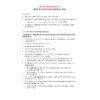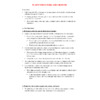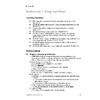|
|
Search Resources (17 Results)
 |
|
Lecture Notes | Approved: 6 years ago | 214.01 kB | Comments: 0
...“Purified” deoxygenated blood leaves the kidney through...
...through which urine leaves the body. The...
...the blood which leaves the glomerulus Filtration...
| N/A |
123
|
johaneswijaya
|
 |
|
Lecture Notes | Approved: 6 years ago | 35.71 kB | Comments: 0
...the epidermis of leaves and other aerial...
...the epidermis of leaves and other photosynthetic...
...to exit from leaves via evaporation. Changes...
...roots, stems, and leaves, which are defined...
...true stems or leaves because they lack...
...vascular cells. The “leaves” of most mosses...
...have more complex “leaves” with ridges to...
...of roots and leaves Most pteridophytes have...
...Lycophytes have small leaves with only a...
...unbranched vein. These leaves, called microphylls, probably...
...In contrast, the leaves of other vascular...
...origin of large leaves and roots. 2....
...horizontal stems. Specialized leaves (sporophylls) bear sporangia...
...lack of true leaves and roots seemed...
...true roots and leaves evolved secondarily. Sphenophytes...
...also produce tiny leaves or branches at...
...grow large megaphyllous leaves with an extensively...
...vascular system. Fern leaves or fronds may...
...back of green leaves (sporophylls) or on...
...on special, non-green leaves. Sori can be...
| 1
|
181
|
Guest
|
 |
|
Lecture Notes | Approved: 6 years ago | 75.15 kB | Comments: 0
...roots, stems and leaves. Rhizoids attach the...
...stems (rhizomes) and leaves (megaphylls). The sporophyte...
...they lack true leaves and roots. Horsetails...
...roots, stems and leaves. The stems are...
...roots, stems and leaves (microphylls). Some clubmosses...
...the roots, stem, leaves and cones, Cone...
...firs, cypresses, etc. Leaves are needles or...
...plants with compound leaves and simple seed...
...are considered modified leaves. Flowers may be...
...stem that bears leaves, flowers, fruits and...
...stems and some leaves. Tracheids Dead at...
...FUNCTION LEAF FORM Leaves are organs and...
...(may be absent). Leaves can be simple...
...sclerenchyma cells. Monocot leaves usually have parallel...
...like dumbbells Dicot leaves have netted venation,...
...primary function of leaves. A single red...
...that allow the leaves to survive cold...
...little need for leaves. Water absorption from...
...altogether during winter. Leaves will continue to...
...removed from the leaves. Chlorophyll breaks down....
...principal function of leaves. Spines are leaves...
...leaves. Spines are leaves adapted to provide...
...provide protection. Succulent leaves are photosynthetic and...
...Some tendrils are leaves modified for grasping....
...Bud scales are leaves modified to protect...
...Sepals are modified leaves that protect developing...
...are made of leaves modified to store...
...food underground. Some leaves are modified to...
...negative water potential. Leaves have higher water...
...potential than the leaves; the roots higher...
...a result water leaves the sieve tubes...
...improperly irrigated. Evaporation leaves salts behind that...
...parent plant. Stems, leaves and roots may...
...stems with storage leaves. It frequently forms...
...covered with papery leaves. Small axillary buds...
...become independent. Modified leaves can produce plantlets...
...plant: indeterminate growth. Leaves and flowers stop...
...solar tracking, sensitive leaves. TROPISMS Tropism is...
...light. Many heliotropic leaves have pulvini at...
...shoots, in young leaves and in seeds....
...produced in young leaves, roots, shoot apical...
...produced in older leaves, the root cap...
| 1
|
219
|
Guest
|
 |
|
Lecture Notes | Approved: 6 years ago | 83.32 kB | Comments: 0
...place. First roots, leaves, vascular tissue, wood,...
...spores, trunks, wood, leaves, etc. Extensive forested...
...vascular tissue, true leaves and reproduce by...
...have seed, complex leaves and have vascular...
...roots, stems and leaves. The gametophyte of...
...two kinds of leaves: Microphylls are single...
...are single veined leaves associated and evolved...
...Sporophylls are modified leaves that bear spores....
...roots, stems and leaves (microphylls). Some Selaginella...
...Sporophylls are specialized leaves that bear sporangia...
...Aerial stems lacking leaves but with scale-like...
...of roots and leaves may be due...
...stem (rhizome) and leaves (megaphylls). Leaves usually...
...and leaves (megaphylls). Leaves usually differentiated into...
...primary root, e.g. leaves, branches. DIVERSITY OF...
...ANATOMY External morphology Leaves are organs and...
...(may be absent). Leaves can be simple...
...sclerenchyma cells. Monocot leaves usually have parallel...
...like dumbbells Dicot leaves have netted venation,...
...FROM ROOTS TO LEAVES. The loss of...
...of water from leaves, stems and other...
...way. When water leaves the meniscus surface,...
...negative water potential. Leaves have higher water...
...potential than the leaves; the roots higher...
...a result water leaves the sieve tubes...
...plant. In the leaves of some plants...
...found in flowers, leaves and fruits of...
...the branches or leaves of trees or...
...folds of the leaves. Carnivorous plants make...
...of the trap leaves of the Venus...
...the cell. Auxin leaves the cell through...
...shoots, in young leaves and in seeds....
...their roots and leaves. Shoot elongation Japanese...
...produced in young leaves, roots, shoot apical...
...parent plant. Stems, leaves and roots may...
...stems with storage leaves. It frequently forms...
...covered with papery leaves. Small axillary buds...
...become independent. Modified leaves can produce plantlets...
...parts are modified leaves. They differentiate under...
...embryonic or seed leaves. Hypocotyl: embryonic or...
...that feed on leaves. Cuticle and cutinase....
...insects feed on leaves, stem and root...
...that induces damaged leaves to produce volatile...
| 1
|
189
|
Guest
|
 |
|
Lecture Notes | Approved: 6 years ago | 52.86 kB | Comments: 0
...g. greening of leaves. 3) Response: in...
...the cell. Auxin leaves the cell through...
...shoots, in young leaves and in seeds....
...produced in young leaves, roots, shoot apical...
...seeds, fruit, shoots, leaves and floral buds....
...the abscission of leaves and bud dormancy....
...produced in older leaves, the root cap...
...products. Abscission of leaves is controlled by...
...of the trap leaves of the Venus...
...acid that causes leaves to drop. Inhibit...
...growth of young leaves. Inhibits the growth...
...Transpiration keeps the leaves and the plant...
...the temperature of leaves 3 - 10°C...
...and more water leaves the cells resulting...
...that induces damaged leaves to produce volatile...
| N/A |
192
|
Guest
|
 |
|
Lecture Notes | Approved: 6 years ago | 54.78 kB | Comments: 0
...caterpillar munching on leaves, or a decrease...
...thin stems, unexpanded leaves, and reduced roots....
...thick stem. Expanded leaves would hinder soil...
...stems slow. The leaves expand and the...
...growth until its leaves again face the...
...from surrounding tissues. Leaves removed from a...
...slow deterioration of leaves on intact plants....
...concentrations. Roots and leaves are major sites...
...growth in both leaves and stems but...
...dropping of autumn leaves). Ironically, ABA is...
...ABA accumulates in leaves and causes stomata...
...from roots to leaves, functioning as an...
...factor that caused leaves to drop from...
...the shedding of leaves in autumn, the...
...The loss of leaves each autumn is...
...frozen ground. Before leaves abscise, many essential...
...from the dying leaves and stored in...
...back to developing leaves the following spring....
...legumes lower their leaves in the evening...
...to restrain the leaves of a bean...
...flowers, it is leaves that detect photoperiod...
...signal. Plants lacking leaves will not flower,...
...the joints of leaves, become flaccid from...
...growth of young leaves. As many plants...
...plants wilt, their leaves roll into a...
...bean plants. The leaves of the noninfested...
| N/A |
192
|
Guest
|
 |
|
Lecture Notes | Approved: 6 years ago | 37.08 kB | Comments: 0
...from roots to leaves. Water and solutes...
...water vapor from leaves and other aerial...
...More water enters leaves than is transpired,...
...upward by the leaves themselves. Transpiration provides...
...way from the leaves to the root...
...from roots to leaves occurs by bulk...
...up to the leaves by bulk flow....
...must spread its leaves to the sun...
...the shoots and leaves. Transpiration also results...
...dry out, the leaves begin to wilt...
...have small, thick leaves, reducing leaf surface...
...some of these leaves a leathery consistency....
...plants shed their leaves, while others (such...
...from roots to leaves, the direction that...
...organ (especially mature leaves) in which sugar...
...it. The upper leaves on a branch...
...whereas the lower leaves of the same...
...example, in corn leaves, sucrose diffuses through...
| N/A |
151
|
Guest
|
 |
|
Lecture Notes | Approved: 6 years ago | 42.84 kB | Comments: 0
...so reduced their leaves that the stem...
...the submerged aquatic leaves of Cabomba are...
...CO2 in water. Leaves that extend above...
...pores in the leaves through which most...
...roots, stems, and leaves The plant body...
...of stems and leaves. Each system depends...
...or even from leaves. In some plants,...
...of stems and leaves. Shoot systems may...
...points at which leaves are attached, and...
...bud with developing leaves and a compact...
...own terminal bud, leaves, and axillary buds....
...swollen bases of leaves that store food....
...that store food. Leaves are the main...
...also photosynthetic. While leaves vary extensively in...
...blade, while dicot leaves have a multibranched...
...spatial arrangement of leaves, and the pattern...
...For example, simple leaves have a single,...
...blade, while compound leaves have several leaflets...
...Some plants have leaves that have become...
...cacti for defense, leaves modified for water...
...and brightly colored leaves that attract pollinators....
...The epidermis of leaves and most stems...
...made in mature leaves to the roots...
...the stems and leaves they support. Sclerenchyma...
...as flowers and leaves, undergo determinate growth,...
...scars left when leaves fell in autumn....
...and ground meristem. Leaves arise as leaf...
...petioles and into leaves. Within a leaf,...
...but not the leaves, of most dicots...
...to new, expanding leaves. The thick-walled cells...
...increasing number of leaves. While the pattern...
...production of compound leaves. Overexpression of this...
...causes the compound leaves of a tomato...
...dermal tissue of leaves and stems. However,...
...of stems and leaves, but the meristem...
...morphology of the leaves produced. The leaves...
...leaves produced. The leaves of juvenile versus...
...branches bearing juvenile leaves if that shoot...
...branch with juvenile leaves may actually be...
...branch with mature leaves. The juvenile-to-mature phase...
| N/A |
180
|
Guest
|
 |
|
Outline | Approved: 7 years ago | 235.86 kB | Comments: 0
Category: Botany | Downloaded: 0
...roots, stems, and leaves. Support The body...
...body. mainly in leaves. C. Terrestrial adaptations...
...water loss e. Leaves—main site of photosynthesis...
...roots, stems, and leaves. • CORE IDEA:...
...Shoots a. Stems, leaves, and flowers b....
...and support the leaves and flowers. 7....
...organ (such as leaves, roots, and stems)...
...are roots, stems, leaves. 3. A leaf...
...source i. Photosynthetic leaves where sugar is...
...to tips of leaves. 4. Steps a....
...from roots to leaves. c. In the...
...c. In the leaves i. Water evaporates...
...Other features: a. Frond—leaves with leaflets radiating...
...spells i. Needle-shaped leaves have a thick...
...first leaf (or leaves) to emerge from...
...flower are modified leaves: petals, stamens, sepals,...
...roots, stems, and leaves. Roots Shoots 9.5...
...roots, stems, and leaves. ? Students will...
...roots, stems, and leaves. ? Examples will...
| N/A |
242
|
Guest
|
 |
|
Lecture Notes | Approved: 7 years ago | 7.45 MB | Comments: 0
Category: Botany | Downloaded: 0
.../ anatomy of leaves leaf – considered...
...rates modifications to leaves allow plants to...
...habit prevents other leaves from growing below...
...variety of adaptations leaves classified based on...
...as: - sun leaves - shade leaves...
...leaves - shade leaves 12 © 2009...
...alter light exposure leaves in top of...
...angles of incidence leaves deeper in canopy...
...plasticity) occur in leaves on the same...
...light: - sun leaves have more lobed...
...exposure - shade leaves have broader less-lobed...
...stomata in sun leaves leads to greater...
...mechanism’ that cools leaves exposed to high...
...thicker in sun leaves 1. Leaf Adaptations...
...modifications - succulent leaves - reduced leaves...
...leaves - reduced leaves (spines) 2. Leaf...
...M.Olaveson-UOIT (b) ericoid leaves under drought conditions...
...spines (termed ericoid leaves) typical of evergreen...
...M.Olaveson-UOIT (c) succulent leaves under drought conditions...
...fleshy or succulent leaves, stems and roots...
...include: ability of leaves to shrink in...
...surface with some leaves submerged and other...
...submerged and other leaves on/above water leaves...
...leaves on/above water leaves show heterophylly where...
...two types of leaves: (1) aerial leaves...
...leaves: (1) aerial leaves that are flat...
...stomata (2) submerged leaves that are highly...
...of aerenchyma in leaves aerenchyma = tissues...
...upper surface of leaves (if present) chloroplasts...
...exchange in submerged leaves occurs by diffusion...
...reduced Other Features leaves roll/fold epidermal cells...
...© 2009 M.Olaveson-UOIT leaves have received most...
| N/A |
182
|
Guest
|
|
Post your homework questions and get free online help from our incredible volunteers
|